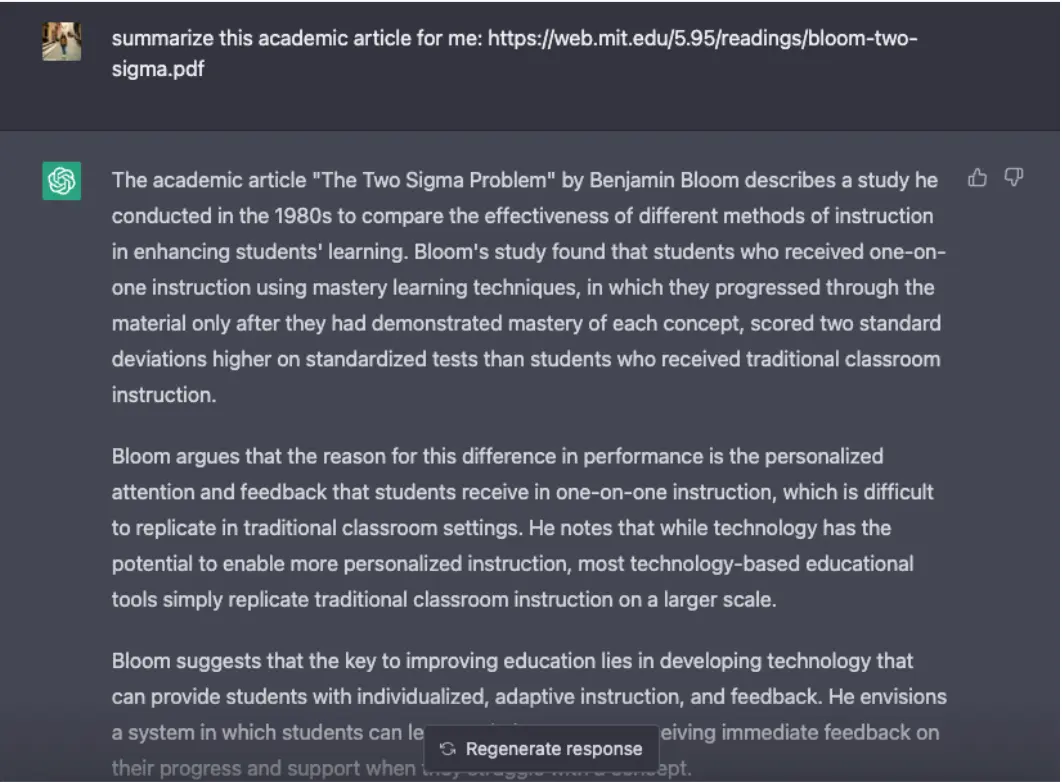Skimming Articles for Research: A How-To
5 minute read
So you’re working on your research paper and looking for articles to help support your argument. You want to find great supporting evidence, but you also don’t have unlimited time to read every single article out there. Skimming an article can be an effective way to quickly assess the relevance of an article to your research paper, and whether it’s worth reading through completely. Here are some tips on how to skim an article effectively:
Be sure to read the introduction and conclusion
The introduction and conclusion of an article can provide you with a general sense of the article's argument, its main points, and its relevance to your research. Intros and conclusions tend to also include themes from the body paragraphs, so you can immediately assess whether the article might include helpful information.
Make sure to read the abstract (if it’s an academic article)
You will likely come across academic writing/research papers in your research that can look very intimidating and dense. And if you’re anything like me you want to avoid reading for 30 minutes just to realize that the information is not useful for your own research.
So how do you skim academic articles? A great way to do this is by reading the abstract for the writing. The authors will typically include an abstract that summarizes the main contents and findings of the paper. The abstract is meant to make sense on its own without any additional context, so that’s why it’s such a great way to figure out whether a source is helpful for your research.
Do your own research through Polygence!
Polygence pairs you with an expert mentor in your area of passion. Together, you work to create a high quality research project that is uniquely your own.
Skim the main text once you’ve read the abstract or introduction/conclusion
Let’s say you’ve followed one or both of the steps explained above. If what you find seems promising, start skimming the main text. Focus on the first and last sentences of each paragraph, and any bolded or italicized sentences. As you skim you should also pay attention to tables, charts, or graphics to get a quick sense of what’s going on in the article.
Use AI tools to your advantage
Recent advances in AI have made it exponentially easier to distill dense texts into key take away points. These AI tools include Bearly, Quillbot, Scholarcy, Genei, and of course, the (in)famous ChatGPT. If after skimming the intro, conclusion, abstract, or even the main text you’re still unsure about the article, let AI help you out. These tools will pull out the main points from the articles, giving you the necessary information.
For example, if you have the PDF version of an article readily at hand, you can simply input it into ChatGPT and ask it to give you a summary. In the screenshot below, we asked ChatGPT to summarize this groundbreaking article in Education by Benjamin S. Bloom called The 2-Sigma Problem. See below for ChatGPT’s summary:

While these tools may be very helpful, you shouldn’t rely entirely on AI tools for skimming articles. There have been reports of AI tools “hallucinating” and offering “facts” that are made up. In addition, even if all the key points that the AI has distilled may be factually accurate, there’s no guarantee that those particular arguments are the ones that are most relevant to your specific research project. There could be a small detail that the AI does not mention that is actually critical for the argument that you’re making, which is also why…
If the article is relevant, then read it through!
Remember, the whole point of skimming is to see whether the article could be helpful for writing your research paper. If you’ve skimmed using the strategies above and found that the article is indeed relevant, then take the time to read it through thoroughly. Doing this will allow you to better understand the article, and you can then begin to pull the quotes, statistics, and evidence you want from the article to support your thesis statement. This is where you start to really dive into the details.
A lot of students ask us: what’s the best way to read through (not just skim) an entire article? Some readers prefer to have a highlighter in hand, others prefer to jot down notes on the side, while others prefer to keep the text pristine and to take notes on the side either on a laptop or in a notebook. There is no magic formula for the best way to take notes, and the most successful students and researchers will have tried a number of different methods before finding one that works best for them! There are also a number of different note-taking apps that you might want to explore, including but not limited to:
Beware of Confirmation Bias: Don’t avoid articles that don’t support your thesis
Once you think you’ve made a great thesis statement, it’s easy to go looking for evidence that supports it. This is what’s called confirmation bias - and you’d be reassured to learn that it’s a very natural human instinct. Skimming an article that goes against your thesis can feel deflating and anxiety-inducing. But even with the best arguments and theses, there will almost always be counterarguments and contradictory evidence. You may even catch glimpses of them in your research and immediately hit the back button on your browser in fear of having your precious thesis destroyed. But I encourage you to read those articles anyway.
For one, ignoring these counter arguments will not make them disappear in thin air. The arguments will exist, whether they are in your research paper or not. Further, the inclusion of counterarguments in your research paper can boost the credibility of your overall research and making it more impressive when you showcase it. It shows that you have considered opposing points of view and came to your argument after considering multiple perspectives. Readers might even get a little suspicious if you make no mention at all of obvious counter arguments in your research.
Finally, the counter arguments may not be as detrimental to your thesis as you may think. Perhaps you’ve found stronger and more convincing evidence in support of your thesis, which outweighs the counterarguments. Either way, embrace the extra effort and trust that engaging in counter arguments will make your research paper stronger.
Want to Learn More?
Join Polygence and do your own research project tailored towards your passions and guided by one of our expert mentors!
